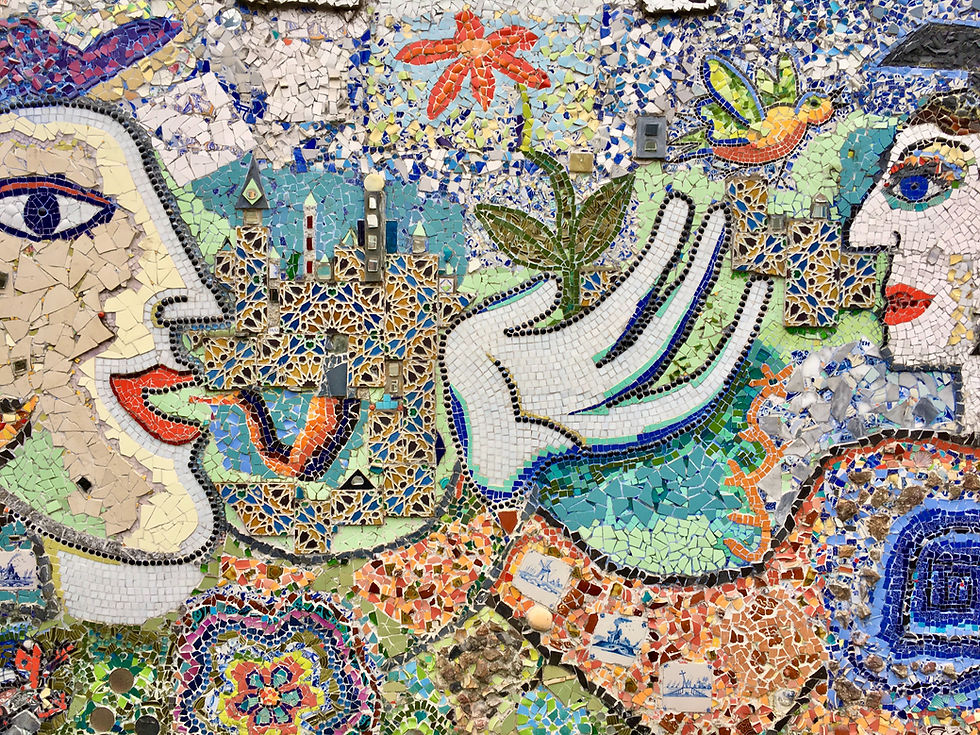Magic: Heka & the Ka in Ancient Egypt
- Sylvia Rose

- Mar 19, 2024
- 5 min read
Updated: Mar 20, 2024
Heka is the god of magic and magical power. His name is the Egyptian word for 'magic'. It also pertains to cult practice. Heka (Hike, Hekau) is the personification of magic and medicine in ancient Egypt.
READ: Cult of the Fire God - Bronze Age Quest Adventure
See also:
In Egyptian magic heka is a neutral force, neither good nor bad. Ancient Egyptians could call upon the heka for solutions to overcome difficulties in life.
READ: Cult of the Fire God - Bronze Age Quest Adventure
The name Heka is identical to the Egyptian word ḥkꜣ(w) "magic". This hieroglyphic spelling includes the symbol for the word ka (kꜣ), the ancient Egyptian concept of the vital force. Heka is associated with medicine, healing and power of the written and spoken words.
See also:
In the Pyramid Texts (2400 - 2300 BCE) Heka is divine energy of gods. The "cannibal pharaoh" devours other gods for this power, as in the Cannibal Hymn. The hymn depicts the pharaoh flying in a stormy sky, eating gods and men. Thus the king receives divine life force.
Heka is also personified as a creator god in the form of man or child. He may hold two snakes. As a child figure he wears a "youth lock", traditional for young nobles in Egyptian society. The child wears it on the right, but in profile art it's shown either way.
See also:
By c. 2100 BCE Heka evolves from a concept to a deity. Most often he is depicted as a young male. Heka sometimes has a leonine head, the hieroglyph for strength/power (pḥty) and sun disc. Above he wears the hemhem crown.
Also called the Triple Atef Crown. it's connected to the sunrise or 'rebirth'. It's sometimes seen in hieroglyphs with a solar child inside a lotus flower. It's supported by horizontal rams' horns. The horns are those of an extinct sheep breed, Ovis longipes palaeo-aegyptiacus.
See also:

An Egyptian Coffin Text spell (261, c. 2100 BCE) says Heka exists "before duality has come into being." In Heliopolis he's described as the son of Atum due the latter’s association with primordial creator of humans and animals, Khnum.
Elsewhere Heka is the son of Khnum and Menhit. Lioness goddess of war in Kush, Nubian divinity Menhit is a tutelary and Sun deity. Her name means either "she who sacrifices" or "she who massacres." She's associated with Eye of Ra Goddesses Wadjet and Neith.
See also:
Heka is initially the deity who watches over one's soul, infuses the soul with energy and power, allowing it to be elevated in death to the afterlife. Due to his protective powers, he's given a prominent place in the sun god's barque as it travels through the underworld at night.
As Heh, Heka forms a trinity of the triple creator facets, with Sia and Hu. Sia forms a dyad with Hu, who represents the tongue. Hu personifies the authority and influence of the spoken word. Sia personifies perception and thoughtfulness, needed to understand truth.
See also:
The creator Sun god, Ra, calls on Heka as the source of power to begin the act of creation on land. He empowers life. Part of Heka's name is hieroglyphs is the 'ka' symbol.
The ka is the essence of life, or the life force. Heka personifies this force. He pertains to the deity, concept and practice of magic. Since magic is an important part of Egyptian medicine, a physician invokes Heka in order to practice heka.
Sia represents the heart, considered the seat of emotion, thought, and character. Hu symbolizes word of the Creator Ptah or Atum, which brings thought into reality.
See also:
Names and naming are powerful magic in ancient Egypt. The name of a god or goddess is often incorporated into given names. Personal names associated with Heka include Hekawy, Hekaf, or just Heka.
Goddess Isis is also sometimes affiliated with Heka. One of her titles is Weret Hekau, Great Lady of Magic.
See also:
Dieties bearing the name of Heka include:
Upt-heka - Enchantment god
Ur-heka - A god of Denderah
Werethekau (Weret Hekau aspect of Isis) - Goddess of protection, esp. the king; personification of supernatural powers
Neb ḥekau (Nebt ḥekau) - goddess of spells
Urit-ḥekau or Hekau-ur: Goddess of Upper Egypt ruling the 10th hour of the day.
See also:
The main cult center of Heka in ancient times is Esna, south of Luxor on the Nile. During the Ptolemaic dynasty (c. 305 - 30 BCE), Heka bestows divine kingship upon the Pharaoh. During Pharaoh's enthronement as a son of Isis, Heka holds him in his arms.
The double snake staff of Hermes has origins in the Egyptian god of magic and medicine. It's said Heka kills two serpents and entwines them on a staff as a symbol of his power. Snakes are associated with medicine, fertility, rebirth, mystery, prosperity and sensuality.
See also:
The motif is adopted by the Greeks and later Romans as the caduceus or symbol of commerce. The Rod of Aesculapius, associated with medicine, is a single snake twined around a branch. The ka sign may have two snakes or a twist of flax between the arms.
The 30th day of Up-Renepet, the 12th month in the Egyptian Lunar calendar, is in late August-early September. It falls on the night of the new moon. On this day ancient Egyptians and modern neo-pagans celebrate the Feast of Heka.
See also:
Heka is later linked to the Greek goddess Hecate. It's thought Hecate is the one who can grant access to the power of Heka, and she can be invoked through rituals and offerings to bring gods and goddesses to life.
See also:













